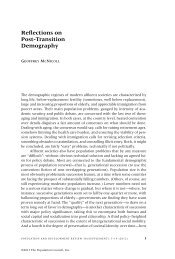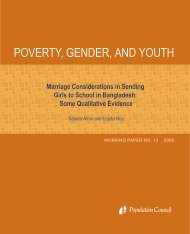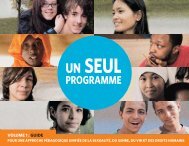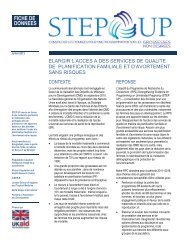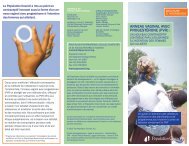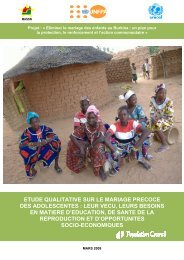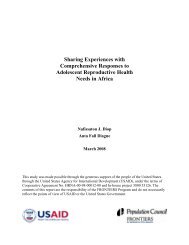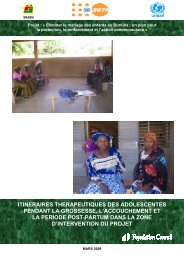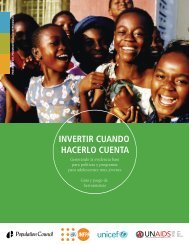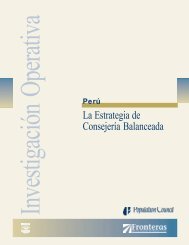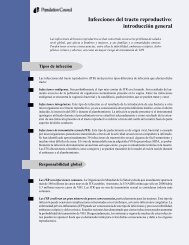Community Health Volunteer's Training Manual - Population Council
Community Health Volunteer's Training Manual - Population Council
Community Health Volunteer's Training Manual - Population Council
You also want an ePaper? Increase the reach of your titles
YUMPU automatically turns print PDFs into web optimized ePapers that Google loves.
Module 2 <strong>Community</strong> Mobilisation and Tools<br />
132<br />
Box 2.4.8: Potential sources of information<br />
1. Local <strong>Community</strong> Leaders<br />
a. Chiefs, elders and opinion leaders<br />
b. Local government officials, assembly members, unit committee members<br />
c. Religious leaders<br />
e. <strong>Health</strong> officials – CHO, sub district health teams, district health administration<br />
f. Members of local organisations – women’s groups, youth groups, NGOs<br />
g. Other health care providers – herbalists, TBAs, chemicals sellers<br />
2. Why deal with local community leaders<br />
a. Get background information about the community - history, population, culture,<br />
health practices<br />
b. Know the proper way to enter the community<br />
c. To sustain the process after health workers have set it in motion<br />
d. To know the main stakeholders of health in the community<br />
e. To identify locally available resources for solving problems.<br />
In conducting C-COPE the above members of the community must be included. Every<br />
community member has something valuable to bring on board. Sidelining any group of<br />
members in the community causes misunderstandings and they will disassociate themselves<br />
from community activities.<br />
A cross section of the community of about 40-50 members are involved. This includes chiefs,<br />
elders, men, women, community members, youth, and group representatives. These people<br />
are put into four groups, Box 2.4.9.<br />
Box 2.4.9 Grouping for C-COPE activities<br />
Group and composition Activity<br />
Male Meet and discuss issues<br />
Female Meet and discuss issues<br />
Mixed (male and female) Site walk (community)<br />
Mixed (male and female) Site walk (facility - CHC)<br />
Poor Diet<br />
Worms<br />
KWASHIOKOR<br />
Figure 2.4.2: Problem Tree to analyse ‘Kwashiorkor’<br />
Fig. 2.4.2. Problem Tree to analyze ‘Kwashiorkor<br />
EFFECTS CONSEQUENCES<br />
PROBLEM<br />
CAUSES



